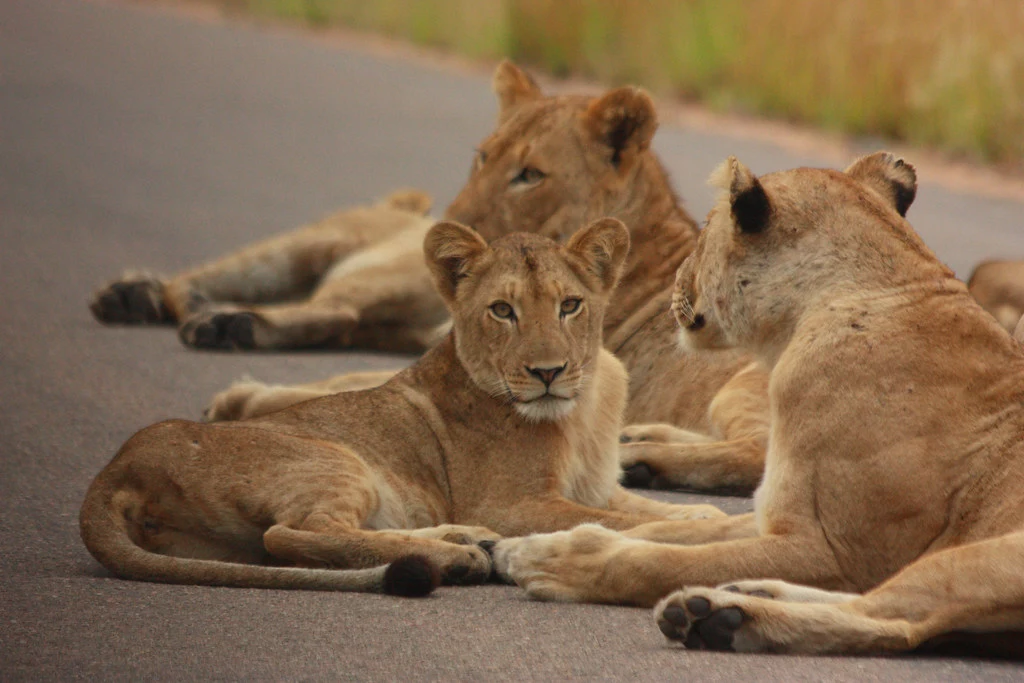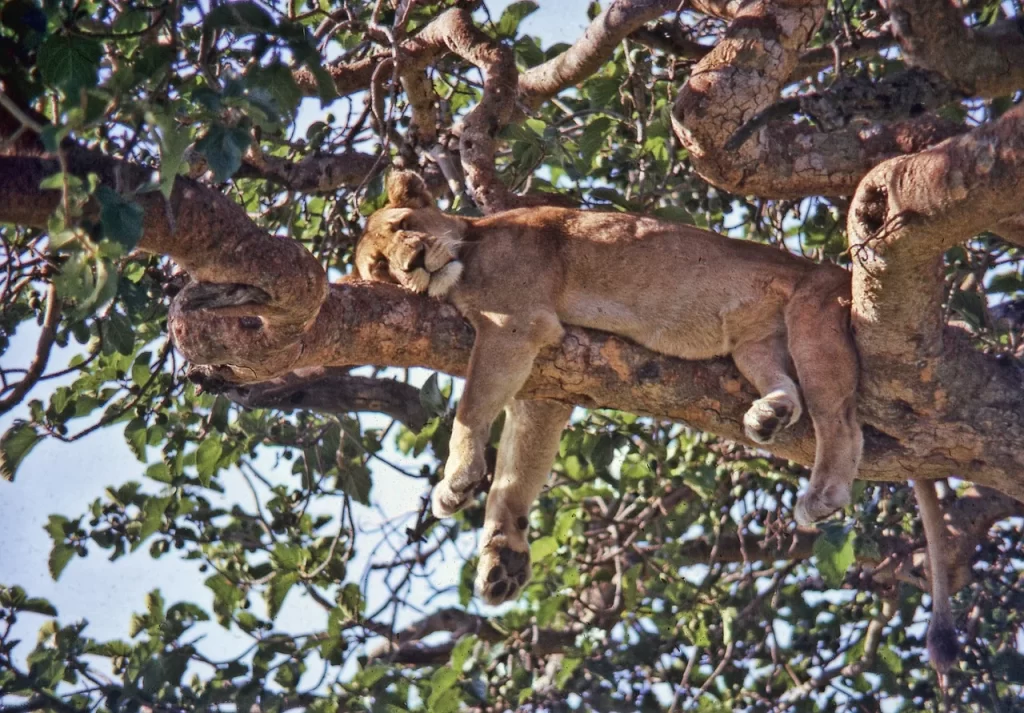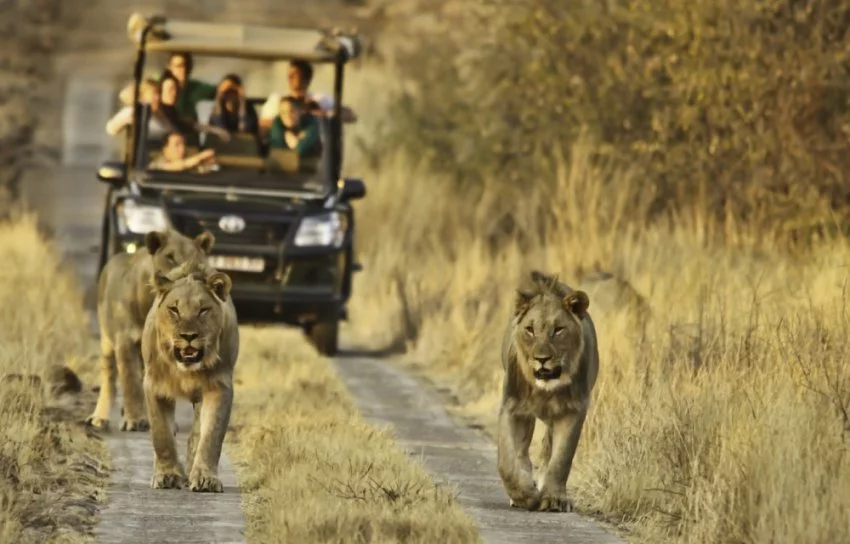- Lions Live In Groups Called A Pride Which Guard A Territory
Lions come from the cat family. Their social behavior differentiates them from the other animals in the cat family. The other animals in the cat family are lone hunters and prefer to move alone or in pairs. On the other hand, lions live in a group called a pride. A pride has 3 to 40 lions- with 3 to 5 males, 12 to 15 females, and cubs.
The males protect and defend the pride’s territory. Lions mark their territory by urinating around the borders. The males also roar so loudly to keep intruders away and chase away animals that come near their territory. After a hunt, the pride shares a meal with the cubs holding the lowest place.

Male lions last for up to 2-3 years in a pride. They fight against each other to be in a certain lion pride. This way, they move from one pride to another.
- Lionesses Are The Backbone Of A Pride
Lionesses are the pride’s leaders and prime hunters. They stay in the same pride since birth and this makes the lion prides matriarchal. All the female lions in the pride are practically related to each other. They also raise their cubs together and nurse each other’s cubs. The female lions define and mark the pride territory.

When the pride grows bigger, the female lions form a new territory near their original pride territory for their female cubs to start their new pride. Each pride has 5 to 15 related lionesses.
- A Pride’s Territory Can Be As Big As 400 Square Kilometers (150 Square Miles)
A lion pride territory varies depending on several factors like the rival pride, and the area they rule- forest, swampy or plain. The territory size includes an area between 20 square kilometers to 500 square kilometers in the most favorable habitats.
The pride territories might overlap but each of the pride maintains its central area where most of the group’s activities take place. A pride can hold up to 40 pride members with more females than males. The male lions keep other male lions from taking over their current territory and pride.
- Lions Live Up To 25 Years Old In Captivity And Between 8-15 Years Old In The Wild
Like most of the other animals from the cat family, lions live for up to 16 years. Male lions have an average lifespan of 8 to 10 years while lionesses can live for up to 16 years.
Due to attacks by other male lions as they fight for food and territory, the lifespan of male wild lions is reduced. When a lion grows old and is challenged by a younger lion, the young one proves to be stronger. This forces the defeated lion out of the pride and without the support of his pride, the lion struggles a lot and mostly ends up dying. The regular fight between male lions leads to many lone lions- without a lion pride to belong to- and since they can’t hunt alone they end up dying.

The female lions, on the other hand, do not leave their lion prides, they just expand them. They also do not fight as often as male lions since they all remain in their original prides. And since they hunt in groups, they are hard to attack thus, they have a high chance of living a longer life.
In captivity, lions live longer up to 25 years. This is because they are fed nutritious food and treated when they fall sick. They are also housed in good quality shades keeping them from harsh climate conditions. They also don’t engage in fights hence, the long lifespan.
- The Roar Of A Male Lion Can Be Heard Over 8Km Away
Roaring is a very important part of a lion’s social behavior and hybridity. The ability for a lion’s roar to be heard from a far distance is thanks to their vocal folds. Both male and female lions roar for letting the other pride members know their location and show strength. It can be heard from over 8 kilometers depending on the weather conditions. Roars are also a way to measure the strength of the other prides around them based on the number of roars heard.
Lions claim and defend their territory by roaring and using their scent to mark it. They convey a roar before they go hunting for the night and in the early morning before waking up. They roar more when the wind speed is moderate, when it is colder and when the air humidity is high. They make sure they are in their home territory boundary when roaring. Lions mostly roar near rivers and water points because of the cold and humid air around the place.
- Some Lions Do Not Have A Mane

Manes grow on a male lion’s neck and encompass their heads. The manes protect the lions when they are fighting with other male lions. A mane is a symbol of age and strength. The darker the mane the older the lion is. A long and dark mane means that the lion will attract most of the females. It also acts as a sign for other males to stay away. Lionesses choose male lions by considering the lions with the darkest and most conspicuous manes.
Mostly, black manes are more attractive to females. They are a sign of genetic superiority, good health, and high levels of testosterone and they help them fight parasites.
When a lion is not healthy enough, its mane falls off. Castrated males do not have manes since the growth of a mane is affected by testosterone. Hot climates are also a cause of slow growth of manes or no growth at all.
Normally, lions don’t climb trees but some climb trees as a behavioral adaptation. They live in a couple of habitats but mostly they live in open grassland, savanna, dense scrub, thick bushes, and open woodland. Due to their high tolerance, they can survive in these semi-arid areas.

The lions climb trees to protect themselves from insects and to get a good view to spot their prey from afar. They also climb trees to stay away from the heat on the ground and find shelter when it rains. The trees also keep them from insects like tsetse flies that bite them as they rest and sleep.
They climb trees like sycamore trees or umbrella acacia trees which have horizontal branches that are not so far from the ground. This makes it easy for them to go up and down the tree.
- Lions Have Been Conditioned Not To Attack Tourists In Tour Vans During A Safari Drive
Human beings are not a lion’s natural prey. Until the lion sees tourists as a threat, they will not attack them. If the lions in the wild are accustomed to seeing safari vans and vehicles, they adjust to it and no longer feel threatened by them.
Normally, lions and lionesses attack when they are curious, poked or they are hungry. Their impulse does not lead them to kill anything that comes their way.

If a lion is not used to seeing humans, it will run away when it comes across one. Lions kill humans when they are injured, sick, or not in a position to hunt normal prey. It also happens when human beings invade the lion’s habitat.
Lions are conditioned to noticing movement, so when a person comes across one they should not run- they should stay as still as possible.
